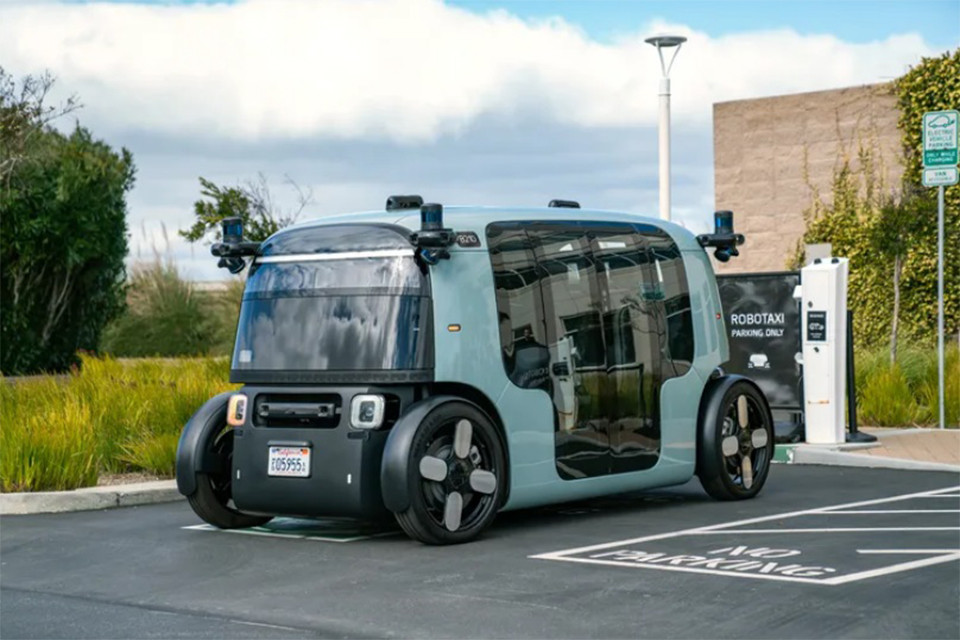Taxicabs have been an integral part of urban transportation for decades by providing door-to-door mobility services. However, with advancements in self-driving vehicle technologies, a new type of transportation called “Robotaxis” have started emerging which promises to transform the taxi industry. Robotaxis, also known as driverless taxis or autonomous taxis, are taxis that do not have a human driver and can transport passengers from one destination to another without any human intervention. Several tech companies and automakers are investing heavily in developing fully functional robotaxis which they aim to deploy in large commercial services within this decade
Emerging Business Models for Robotaxi Services
Some of the major business models emerging for Robotaxi services are:
Shared Mobility-as-a-Service (MaaS): Companies like Waymo, Cruise and Uber are planning to launch robotaxi services where customers can hail an unmanned taxi through their mobile apps for on-demand trips. Payment would be on per ride basis through the apps. This model would be extremely cost-effective and efficient for short point-to-point trips within cities.
Robotaxi Fleets for Airports/Hotels: Companies like Navya, EasyMile and Aptiv have started piloting autonomous shuttles to ferry passengers within defined routes in airports, business parks and hotels. This helps reduce congestion of private vehicles and provides a convenient last-mile connectivity option for travelers.
Subscription Services: Startups like Autox are exploring subscription models where users pay a fixed monthly charge to access a robotaxi fleet for unlimited trips within designated urban areas. This could make shared mobility affordable for daily commutes.
Autonomous Truck Platooning: Convoy, Starsky Robotics and TuSimple are working on platooning technology where a human-driven truck leads a convoy of following self-driving trucks on highways. This improves freight efficiency while reducing driver shortage issues.
Technology Advancements Driving the Robotaxi Revolution
Significant progress is being made on the five core technologies critical for safe deployment of robotaxis:
1. Advanced Sensors: Use of cameras, radars, lidars provide 360 degree awareness to detect objects in all weather/light conditions. Tech like Intel’s Mobileye supervision is helping improve perception accuracy.
2. High-Definition Maps: Detailed HD maps with centimeter accuracy of road layouts, signs and terrain from companies like TomTom, Here and DeepMap help the vehicles localize precisely without any latency.
3. Powerful AI & Compute: Neural networks, computer vision and reinforcement learning algorithms trained with billions of miles of real world fleet data are constantly enhancing decision making capabilities of the vehicles. Additional processing power from Nvidia’s Pegasus helps achieve safer driving policies.
4. Secure Connectivity & Over the Air updates: 5G cellular networks and vehicle-to-everything (V2X) communication allows robotaxis to connect to each other for cooperative navigation. Remote software updates ensure the latest functional/security enhancements are installed seamlessly in the field.
5. Efficient Fleet Management: Companies are developing centralized intelligent dispatch systems that monitor vehicle state, navigate routes efficiently and group commuters with common routes to optimize productivity and offset costs.
Building Trust and Ensuring Safety of Robotaxi Rides
While the technology appears promising, public adoption of robotaxis depends upon demonstrating reliable safety during all complex driving scenarios. Researchers are taking the below measures to develop trust in autonomous vehicle capabilities:
– Validating ISO 26262 Functional Safety Standards: OEMs are comprehensively assessing potential failures and incorporating robust fail-operational safety mechanisms to ensure minimum risks.
– Simulating Rare/Emergency Scenarios: Using high-fidelity simulation engines, robotaxis are thoroughly vetted for myriad hazardous situations like road debris, medical emergencies, sudden tire bursts etc. before field trials.
– Measuring Functional Safety: Companies rate their vehicles on metrics like Mean Miles Between Technical Assistance (MMBTA), Dispatch Reliability and Intervention Rates to benchmark comfort levels for passengers during rides.
– Continuous Human Oversight: As of now, most robotaxi programs employ safety drivers to takeover operations during tricky maneuvers and evaluate system responses to unfamiliar stimuli to find areas for improvement.
– Establishing Regulatory Guidelines: DMV of various states and international bodies like UNECE are drafting policies to streamline testing procedures and certify autonomous vehicles as commercially safe based on their self-assessment reports and evaluations.
Impact of Robotaxis on the Mobility Landscape
Robotaxis have the potential to dramatically impact key aspects of mobility in the coming decade:
– Accelerating Shared Mobility Trends: By making shared rides cheaper, more convenient and accessible, robotaxis will boost adoption of mobility options over private car ownership. This furthers sustainable transportation goals espoused by many cities.
– Revitalizing Public Transit: Last-mile autonomous shuttles and on-demand robotaxi services can feed travellers efficiently into main public transport arteries and supplement areas poorly covered currently. This revives appeal for public mobility.
– Reducing Congestion & Parking Requirements: As shared robotaxi fleets replace private vehicles, road space taken up by empty cars reduces significantly and eases traffic flow across dense cities. Fewer parking spaces are also needed.
– Generating New Mobility Jobs: While roles like professional driving may decline, secondary jobs in robotaxi operation, fleet maintenance, customer support and programming will flourish demanding a new skillset.
– Supplying Accessibility Options: Select users like the elderly and disabled who face difficulties using standard transport can gain independent mobility leveraging affordable, demand-based robotaxi services.
– Lowering Transport Costs Overall: With higher vehicle utilization, robotaxi economics may help slash fares compared to present taxi cab models benefiting daily commuters and stimulating local economies.
Robotaxis are set to revolutionize the urban mobility landscape within this decade with their driverless transportation capabilities. While significant technological and operational challenges remain, sustained progress on key fronts indicates their vision to provide safer, affordable and sustainable shared transportation at scale. Widespread adoption of robotaxis has the promise to reshape our cities and make personal mobility a seamless utility for all.
*Note:
1. Source: Coherent Market Insights, Public sources, Desk research
2. We have leveraged AI tools to mine information and compile it

